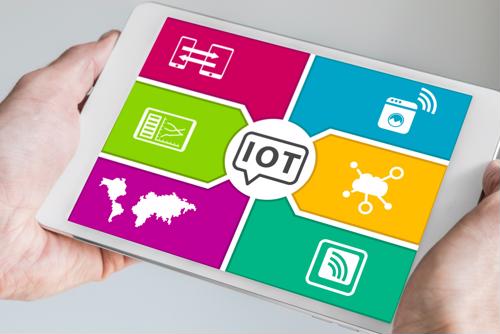
5 ways IoT makes buildings safer and more secure
By Max BurkhalterNovember 22, 2021
The Internet of Things (IoT), technologies and devices that can sense information and communicate it to the Internet, has been used in various ways in recent years. These uses include making electronics and even buildings "smart," AKA internet-connected, helping manufacturers and warehouses work more efficiently and transferring data through the cloud, according to Oracle.
IoT has also helped make commercial buildings a safer place to work, eat and visit. Whether it's sending alerts about unsafe building conditions, monitoring air quality or helping first responders communicate more easily during an emergency, IoT can play a big role in making the buildings we visit on an almost daily basis more secure.
Here are five ways IoT makes buildings safer all around.
1. IoT ensures buildings and the surrounding areas are structurally sound
With IoT, officials can work to prevent disasters like building and structural collapses from happening, according to Security Magazine. City officials can take the data that IoT sensors generate to drive artificial intelligence (AI) and machine learning algorithms and get a clearer look at their city's infrastructure and discover any damaged structures before they get any worse. Officials can then call for preventative maintenance work to be done to avert disaster in future.
For example, IoT sensors connected to bridges work 24/7 keeping an eye out for damage. A sensor can spot a growing crack or strain in the structure and alert the proper parties so they fix it before it collapses and harms surrounding buildings and the people inside.
2. IoT helps increase building security
Thanks to IoT, there's no shortage of ways for a property owner to track who comes in and out of their building. These measures include biometric scanners, thumbprint reading and digital security codes, Yahoo Finance reports. Meanwhile, internet-connected door closer and exit device use is only expected to increase for commercial properties like offices and shopping malls. Commercial real estate owners find such devices attractive because they allow them to have an aesthetically pleasing space that's also secure. Yahoo Finance also reports that the door closer and exit devices market could reach $4.55 billion by 2026.
Smart lock demand has also increased across the U.S. recently due to rising safety concerns and more awareness of IoT and other tech solutions. The smart deadbolt lock market could grow $188.59 million by 2026.

3. IoT can help improve in-building air quality
When one spends up to eight hours a day indoors, they want to know the air they're breathing is healthy. IoT devices have taken all of the guesswork out of the equation when it comes to air quality. Sensors not only monitor air quality but also can deliver accurate results to IoT apps in real time. The uptick in environmental pollution has created greater demand for air quality sensors, according to a Market Research Future report. State and local government regulations have also led to air quality monitors becoming more commonplace in commercial buildings.
Indoor air quality will likely remain top of mind for a lot of people returning to an office following the COVID-19 pandemic. IoT and smart building technologies will be critical in monitoring and reporting safe indoor air quality levels as well as adhering to CDC guidelines, according to Strategy of Things.
4. IoT can help first responders during emergencies
The ability to communicate can be the difference between life and death during a building emergency like a fire. As firefighters make their way through a smokey building to locate tenants or each other, they need a reliable network on which their communication devices can operate. IoT grants first responders more confidence that their devices will work when they need them to.
"Public safety communications have already been adapting to IoT," the Cybersecurity and Infrastructure Security Agency (CISA) said in a report. "Use of a smartphone, tablet, laptop, or navigational system has introduced some of the benefits and risks of an IoT environment. To ensure IoT can effectively support public safety communications, the community should promote information sharing, collaboration, and training, while also addressing the associated cybersecurity, privacy, and system design considerations."
Additionally, smart buildings consistently monitor access and review video feeds. Any information discovered during this monitoring, such as how many people are in the building, where the damage is the worst, etc., can be shared with public safety officials to help them with their task, according to Intel.
5. IoT can help improve employee safety
IoT tech can help make the workplace a safer environment for employees in multiple ways. For example, the technology can analyze certain data to create occupational health and safety measures for employees, IoT For All writes. In a factory for instance, IoT tools working with human resources and workforce solutions could create schedules that limit workers' exposure levels or ensure that every shift is equally staffed.
Staying on the health topic, IoT For All also suggests companies could supply their employees with wearable devices to monitor their health. The wearables would be connected to an IoT server and would provide data that could help employees and the company make safe and healthy decisions.
From a building and employee safety standpoint, there are IoT fire safety sensors that can detect rising temperatures that would point to a fire potentially spreading. Catching the temperature rise could minimize the damage, give employees more time to exit the building or possibly prevent the fire from occurring at all.
To find out how Perle can make buildings safer with IoT technology, be sure to read a few of our customer success stories.



